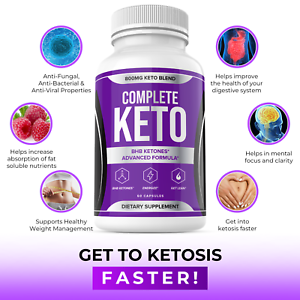keto one shot remains one of the top buzzwords when it comes to dieting and fitness, thanks to celebrities who vouch for its popularity and the many health benefits it provides aside from weight loss. The diet plan, which is designed to help you achieve faster results, works by reducing your carb intake and converting fat into fuel. The ketones produced by the broken-down fats drive the body further into ketosis, which aids fat burning.
On average, a person’s diet consists of 20-30% protein, 60-70% fats, and just 5% net carbohydrates. The Ketogenic diet is also known to increase metabolic rate, lower blood glucose levels, and, most importantly, limit carb consumption.

Is it okay to eat Indian food on a Ketogenic diet?
A diet can only be considered nutritious if it is based on simple foods and is simple to follow. Many people believe that adopting a fat-loss-promoting diet like Keto is impossible in the Indian diet since most of the foods we eat are high in carbohydrates. However, this isn’t entirely accurate. Following the Keto diet and eating local Indian food will still yield results without burning a hole in your wallet or relying on fad foods.
What we must also note is that, despite their difficulty, Indian cuisine is rich in nutrient-dense flours, fats, and vegetables, all of which can be included in your Keto diet. As it has grown in popularity, it has become easier to find options and meal plan accordingly, without sacrificing your taste.
What Indian foods can you eat if you’re on a Keto diet?
When on Keto, you can easily add and integrate fat sources into your diet.
A lot of other herbs, spices, and recipes are the same way. The only thing to remember is to look at the base of each dish—how many carbohydrates are in it or what ingredients are used in its preparation—and make your choice accordingly.
For those new to the Keto diet, some of the best Keto-approved vegetables to try include spinach, avocado, cauliflower, kale, French beans, bottle gourd, brinjals, button mushrooms, beetroots, zucchini, and bell peppers, which are not only nutrient-dense but also available year-round.
Make sure you don’t consume too many high-starch vegetables, as they can knock you out of ketosis. If you’re not a vegetarian, poultry and meats like chicken, mutton, lamb, fish, and, of course, eggs can help. White butter, paneer, and high-fat cream are healthy dairy choices to consider, and they’re used in a lot of local dishes. When it comes to fats and oils, which serve as a primary source of energy in your diet, various cooking oils/butter may be used. It is possible to use clarified butter, coconut oil, olive oil, almond oil, and other MCT oils that have undergone limited processing. Peanut butter and other nut butter are good choices for salads, smoothies, and other dishes.
Sugar-free Keto sweeteners, natural sweeteners, and stevia can all be used. 3-4 liters of water and 2-3 tablespoons of salt every day is a healthy rule of thumb. Bone broth or salted nuts may also be good options.

